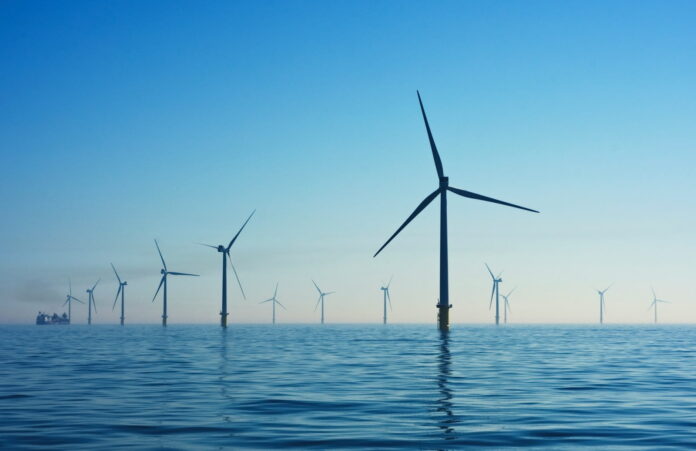In the quest for sustainable energy solutions, wind power has emerged as a significant player. It offers a promising avenue to reduce greenhouse gas emissions and dependence on fossil fuels. However, the expansion of wind farms has raised concerns about the impact on wildlife, particularly birds. The collision of birds with wind turbines and habitat disruption are pressing issues that demand attention. Addressing this challenge requires a delicate balance between harnessing wind energy and ensuring bird safety.
Understanding Bird Risks from Wind Turbines
Wind turbines present a range of risks to bird populations, including collision fatalities, habitat disruption, and potential displacement. The spinning blades of turbines can be deadly to birds that fly into their path, particularly migratory and raptor species that may traverse wind farm areas. These collisions often occur because birds do not perceive the rotating blades as obstacles or are unable to react in time due to their speed. The placement of turbines can disrupt important bird habitats, causing changes in food availability, breeding sites, and migration corridors.
The risk to birds is not uniform across species or locations. Some birds, such as large raptors, are more prone to turbine collisions due to their flight behaviors and attraction to the same windy areas that are ideal for wind power generation. Additionally, the cumulative impact of multiple wind farms along migration routes can pose a significant threat to certain bird populations. It is crucial to understand these risks in detail to develop effective mitigation strategies. This includes thorough pre-construction assessments to identify and avoid high-risk areas, as well as post-construction studies to monitor the actual impact on avian species.
Strategic planning and research are essential to minimize the risks to birds. By analyzing bird flight patterns and behaviors, developers can make informed decisions about turbine placement. There are also considerations for the design and operation of wind farms that can reduce the risk, such as using technology to detect birds and pause turbines when collisions are likely. Understanding the risks is the first step in creating a path toward a wind energy future that is safer for our avian cohabitants.
Strategies for Safer Wind Energy
To mitigate the impact of wind turbines on birds, a multifaceted approach is necessary, starting with the careful siting of wind farms. By avoiding critical habitats, migration paths, and areas of high bird activity, the risk of negative interactions can be significantly reduced. The incorporation of avian studies in the early stages of site selection is critical, allowing developers to understand the potential impacts on local and migratory bird populations. When avoidance is not possible, minimizing and mitigating the impacts become the focus, employing various strategies to lessen the harm to bird populations.
Technology plays a pivotal role in creating safer environments for birds around wind turbines. Innovations such as radar and GPS tracking systems can provide real-time data on bird movements, enabling the dynamic management of turbine operations to prevent collisions. For instance, systems that detect approaching birds can temporarily halt turbines, reducing the risk of fatal encounters. Additionally, altering the color and pattern of turbine blades has been shown to increase their visibility to birds, thereby reducing the risk of collisions.
Another key strategy involves adaptive management, where ongoing monitoring results inform operational changes over time. This approach requires a strong commitment to research and collaboration between industry, conservationists, and regulatory bodies. By continuously collecting data on bird-turbine interactions and adjusting management practices accordingly, the wind energy industry can more effectively address the dynamic nature of avian conservation challenges. These strategies collectively represent a proactive step towards harmonizing the expansion of wind energy with the imperative of bird protection.
Monitoring and Adapting for Avian Protection
Continuous monitoring is the cornerstone of understanding and mitigating the impact of wind turbines on bird populations. Post-construction monitoring programs are vital for assessing actual impacts compared to pre-construction predictions. By tracking bird fatalities and disturbances, wind energy developers can gather valuable information to refine impact assessments and improve mitigation measures. This data can also inform adaptive management strategies, ensuring that practices evolve in response to new information about bird-turbine interactions.
Technological advancements are enhancing monitoring efforts, enabling more accurate and efficient data collection. Automated detection systems, such as cameras and acoustic sensors, can monitor bird activity around wind farms continuously, providing a wealth of data for analysis. Machine learning algorithms can further assist by analyzing patterns and predicting high-risk periods for bird collisions. These technologies make it possible to implement responsive management actions that can significantly reduce avian mortality rates.
In addition to technological solutions, collaboration with wildlife agencies, conservation groups, and the scientific community is essential for adaptive management to succeed. Such partnerships ensure that monitoring programs are scientifically robust and that mitigation measures are aligned with conservation objectives. Importantly, they also facilitate the sharing of best practices and lessons learned across different regions and wind energy projects. Collaborative efforts like these are crucial for fine-tuning wind farm operations to protect bird populations while still meeting human energy demands.
The pursuit of sustainable wind energy must go hand in hand with the conservation of bird species. Understanding the risks wind turbines pose to birds, implementing strategic mitigation strategies, and committing to ongoing monitoring and adaptation are key components to achieving this balance. By integrating technological innovations, scientific research, and collaborative efforts, it is possible to minimize the impact on avian wildlife and ensure that wind power remains a viable and environmentally responsible energy source. As we move forward, it is imperative that the wind energy sector continues to evolve and refine its practices, demonstrating that it is possible to protect our planet’s natural heritage while harnessing the power of the wind.
